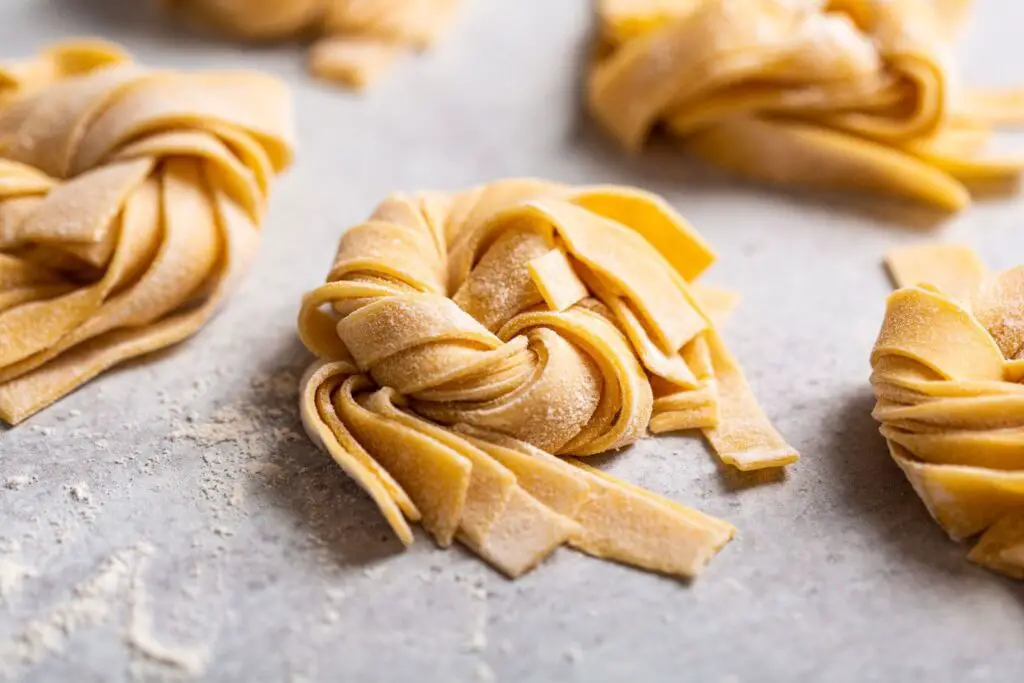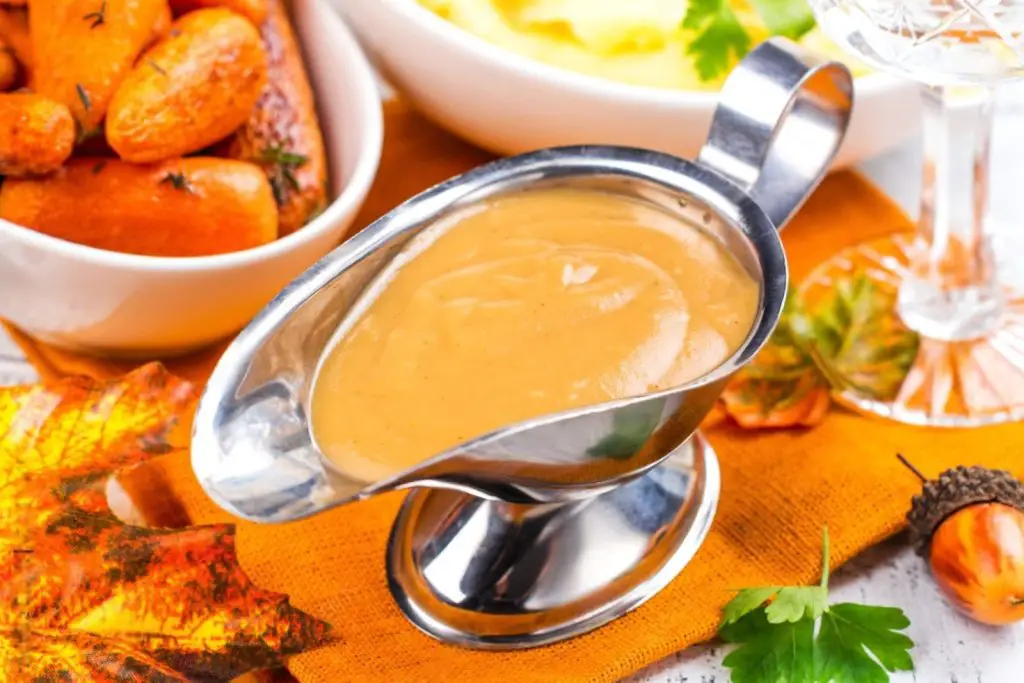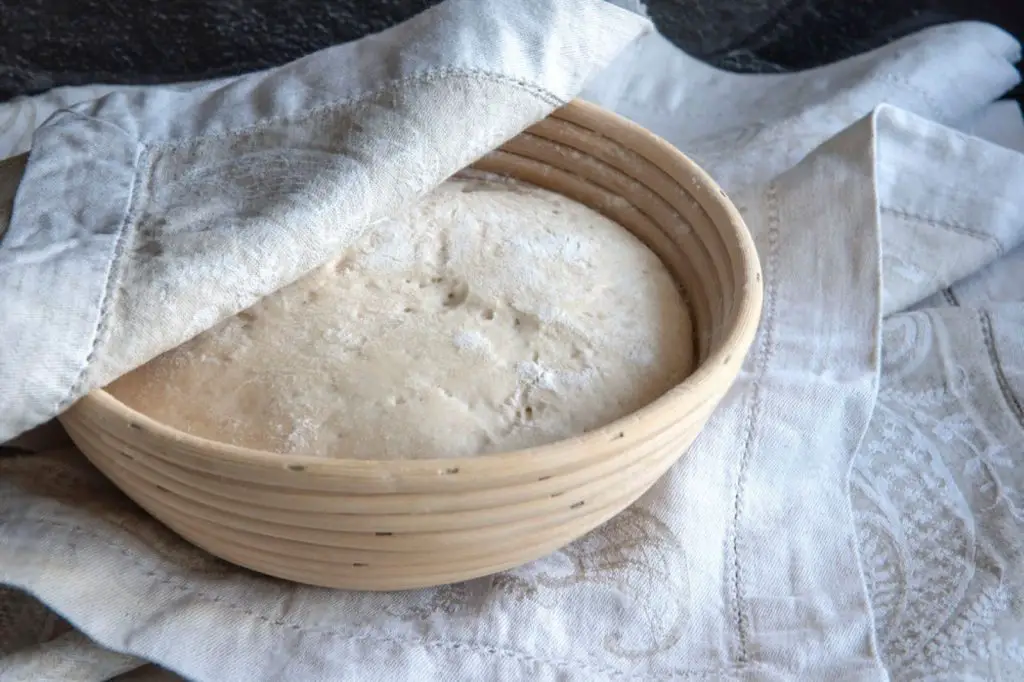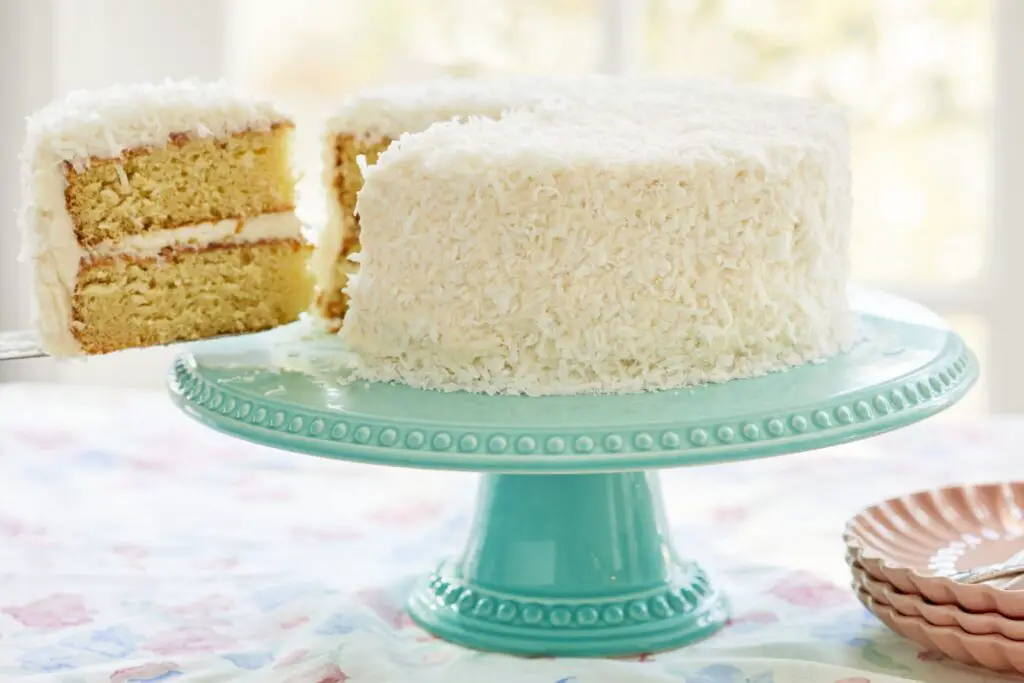
Smoothies are a delicious and refreshing way to enjoy a wide variety of fruits, vegetables, and other nutritious ingredients. Whether you have a surplus of fresh produce or want to prepare ahead for busy mornings, freezing smoothies can be a convenient and time-saving option. Freezing smoothies allows you to preserve their vibrant flavors and nutritional value while also providing the flexibility to enjoy them whenever you desire. By preparing and packaging your favorite smoothie combinations in advance, you can easily whip up a nourishing and delicious beverage in no time. Whether you prefer fruity blends, green smoothies, or protein-packed options, freezing your smoothies ensures that you’ll have a ready-to-enjoy treat that’s packed with goodness whenever you need a quick and healthy pick-me-up.
Here are the simple steps to freeze smoothies:
Step 1: Allow the smoothie to cool down
After preparing a fresh smoothie, it’s crucial to allow it to cool down to room temperature before proceeding with the freezing process. This step may seem unnecessary, but it plays a vital role in maintaining the quality of the ingredients and preventing condensation from forming inside the container.
When a smoothie is freshly prepared, it’s typically at a slightly higher temperature due to blending or the addition of ice. Placing a hot or warm smoothie directly into the freezer can result in condensation forming on the container’s surface and, more importantly, inside the container itself. This moisture can lead to ice crystals, which may affect the taste, texture, and overall quality of the frozen smoothie.
By allowing the smoothie to cool down to room temperature, you give the ingredients a chance to stabilize and minimize the chances of condensation occurring. This cooling process helps preserve the flavors and nutrients in the smoothie and ensures a smoother freezing process.
Additionally, cooling the smoothie before freezing prevents temperature shock, which can impact the texture and consistency of the final product. Sudden temperature changes can cause the ingredients to separate or result in a grainy texture, detracting from the enjoyable smoothness that we associate with a well-prepared smoothie.
Step 2: Choose suitable containers
When it comes to freezing smoothies, selecting the right containers is crucial to maintain their freshness and prevent freezer burn. Here’s why it’s important to choose suitable containers and ensure they are clean and dry before use.
Freezer-safe and airtight containers are essential for preserving the quality of your frozen smoothies. These containers help create a barrier that protects the smoothie from exposure to air, moisture, and potential odors in the freezer. By preventing air from reaching the smoothie, you can minimize the risk of oxidation, which can lead to flavor and nutrient loss.
Mason jars are a popular choice for freezing smoothies due to their durability and ability to withstand freezing temperatures. They come in various sizes, allowing you to portion your smoothies according to your needs. The screw-on lids of mason jars create a tight seal, preventing any air from entering and ensuring the smoothie stays fresh.
Plastic resealable bags are another convenient option for freezing smoothies. Opt for freezer-safe bags that are thick and sturdy to prevent leaks or tears. These bags are flexible and can be easily stacked or laid flat in the freezer, maximizing space efficiency. Remember to remove any excess air from the bag before sealing it to minimize the risk of freezer burn.
BPA-free plastic containers are also suitable for freezing smoothies. Look for containers specifically labeled as freezer-safe. They should have secure lids that create an airtight seal, protecting the smoothie from freezer odors and maintaining its quality over time.
Regardless of the container you choose, it’s important to ensure they are clean and dry before use. Clean containers help prevent any potential contaminants from affecting the flavor or quality of the smoothie. Thoroughly wash the containers with warm, soapy water, rinse them well, and allow them to air dry completely. Moisture can lead to ice crystals or freezer burn, so make sure the containers are completely dry before filling them with your smoothie.
Step 3: Portion your smoothies
Deciding on the desired serving size and properly portioning your smoothies before freezing offers several benefits, making it more convenient and efficient when you want to enjoy a frozen smoothie later on. Here’s why it’s important to consider portioning and the methods you can use:
- Easy serving size: Portioning your smoothies allows you to have individual servings readily available in the freezer. This eliminates the need to defrost an entire container if you only want a single serving. It provides flexibility and convenience for those times when you’re in a rush or want to enjoy a quick snack.
- Reduced waste: By portioning your smoothies, you can avoid waste. Instead of defrosting more than you need and potentially discarding leftovers, you can take out only the desired amount, minimizing any unnecessary waste.
- Efficient defrosting: Smaller portions thaw more quickly than larger ones. Portioning your smoothies into individual servings ensures faster defrosting times, allowing you to enjoy your smoothie sooner. This is especially helpful when you’re short on time or need a quick and refreshing beverage.
- Versatile use: Portioned smoothies offer versatility in their use. You can easily incorporate them into recipes or customize them further by adding additional ingredients, such as fruits, vegetables, or protein powder, based on your preferences. This flexibility gives you the opportunity to experiment with different flavors and combinations.
To portion your smoothies, you have a few options. One method is to use measuring cups to pour the desired amount of smoothie into individual containers or bags. This is helpful if you have specific serving sizes in mind or want to maintain consistency across portions.
Alternatively, an ice cube tray can be used for smaller, single-serving portions. Pour the smoothie into the ice cube tray compartments and freeze them. Once frozen, you can transfer the smoothie cubes into a resealable bag, making it easy to grab a few cubes at a time for blending or snacking.
Remember to leave a little space at the top of each container or compartment to allow for expansion during freezing.
Step 4: Pour the smoothie into the containers
Once your smoothie has cooled down to room temperature and you’ve selected the appropriate containers, it’s time to transfer the smoothie into them. It’s important to pour the smoothie carefully and leave some headspace at the top to allow for expansion during freezing. Here’s why this step is crucial:
- Expansion during freezing: Liquids, including smoothies, expand when they freeze. If you fill the containers to the brim, the expanding smoothie can push against the lid or cause the container to crack, potentially leading to leaks or messy freezer spills. Leaving some headspace at the top provides room for the smoothie to expand without causing any damage.
- Preservation of quality: Leaving headspace in the containers helps maintain the texture and taste of the smoothie. As the smoothie freezes and expands, the headspace allows it to retain its consistency without becoming too solid or altering its flavors.
- Easier handling and stacking: By not overfilling the containers, you ensure that they are not overflowing or difficult to handle. Containers with some headspace are easier to seal properly, minimizing the risk of leaks or freezer burn. Additionally, having space at the top of the containers allows for easier stacking in the freezer, optimizing storage space.
When pouring the smoothie into the containers, do so slowly and with caution to avoid spills or messes. Use a ladle, measuring cup, or a pouring spout if needed. Leave approximately 1/2 inch to 1 inch (1.3 cm to 2.5 cm) of headspace at the top, depending on the container size and the smoothie’s consistency.
If you’re using containers with lids, make sure they are securely sealed after pouring the smoothie. If you’re using resealable bags, remove any excess air before sealing them tightly.
Step 5: Seal the containers
After pouring your smoothie into the chosen containers and leaving some headspace, it’s essential to securely seal the containers with their airtight lids. This step is crucial in preventing air from entering the containers, which can lead to freezer burn and compromise the taste and quality of the smoothies. Let’s explore why sealing the containers tightly is important:
- Preventing freezer burn: Freezer burn occurs when air comes into contact with the surface of frozen food, causing moisture to evaporate and leaving behind dehydrated patches. This can result in a change in texture, flavor, and overall quality of the smoothies. By tightly sealing the containers, you create a barrier that reduces the amount of air reaching the smoothie, minimizing the risk of freezer burn.
- Maintaining freshness: Air exposure can lead to oxidation, causing the smoothie to lose its fresh taste and nutritional value over time. The airtight seal created by securely closing the lids helps preserve the flavors, colors, and nutrients of the smoothies, ensuring they retain their vibrant and delicious qualities.
- Preventing odors: Properly sealed containers also help prevent the transfer of odors from other foods in the freezer. Strong-smelling items can affect the taste and aroma of your smoothies if the containers are not securely closed. By ensuring a tight seal, you maintain the integrity of the smoothie’s flavors and prevent any unwanted odors from seeping in.
When sealing the containers, check that the lids fit snugly and create a secure seal. If using screw-on lids, ensure they are tightened properly. For resealable bags, press out any excess air before sealing them tightly. This will help create an effective barrier against air and moisture.
Step 6: Label and date the containers
Once you have sealed the containers with your smoothies, it’s important to label and date them using a permanent marker. This simple step plays a crucial role in easy identification and helps ensure that you consume the smoothies within the recommended time frame. Let’s delve into why labeling and dating the containers is essential:
- Easy identification: By labeling each container, you can easily identify the contents without having to open them or rely on memory. This is particularly useful if you have multiple types or flavors of smoothies in your freezer. Clear labels allow you to quickly choose the smoothie you’re in the mood for without any confusion.
- Consumption timeline: Adding the date of freezing to the containers allows you to keep track of the smoothies’ freshness and consumption timeline. It helps you prioritize the older smoothies first, ensuring that you consume them before they exceed their recommended storage time. This is especially important for maintaining the quality and taste of the smoothies.
- Preventing waste: Knowing the date of freezing can help you avoid wasting smoothies that have been stored for too long. If you’re unsure whether a particular smoothie is still within its recommended timeframe, the date on the container serves as a reference point. It allows you to make informed decisions about which smoothies to consume first and helps minimize unnecessary waste.
When labeling the containers, use a permanent marker that can withstand freezer temperatures and won’t smudge or fade over time. Write the contents of the smoothie and the date of freezing in a clear and legible manner on each container. Consider placing the label on the front or top of the container for easy visibility.
Step 7: Freeze the smoothies
After properly labeling and dating your smoothie containers, it’s time to place them in the freezer for the freezing process. This step involves organizing the containers in a way that maximizes space and ensures the smoothies are protected from potential sources of odor. Here’s why freezing the smoothies in an organized manner is important:
- Space optimization: To make the most of the freezer space, organize the containers in a way that allows for efficient stacking and utilization of available room. If you’re using resealable bags, laying them flat instead of standing them upright can save space and make stacking easier. By organizing the containers neatly, you can optimize the freezer’s capacity and make room for other items if needed.
- Prevention of odor transfer: Freezers can sometimes contain various food items with strong odors. To protect the taste and quality of your smoothies, it’s important to ensure they are not exposed to potential sources of odor. By organizing the containers away from pungent foods or items with strong aromas, you minimize the risk of any unwanted flavors or smells transferring to your smoothies. This helps maintain the original taste and integrity of your frozen creations.
- Easy access: Consider arranging the containers in a way that allows for easy access to each smoothie. This can be particularly helpful when you want to grab a specific flavor or portion size without having to dig through the freezer. By organizing the smoothies in a logical and accessible manner, you enhance the overall convenience and enjoyment of your frozen treats.
When placing the containers in the freezer, ensure they are stable and won’t tip over. If using resealable bags, you can stack them on top of each other once they are flat to save space. Avoid overcrowding the freezer, as this can impede proper airflow and lead to uneven freezing.
Other related questions
How long can smoothies last in the freezer?
Smoothies can typically last in the freezer for up to three months while maintaining their quality and taste. However, it’s recommended to consume them within the first month for the best experience. Properly sealed and stored smoothies can retain their nutritional value and flavors during this time.
How do you defrost smoothies?
To defrost a frozen smoothie, there are a few methods you can use. The safest method is to transfer the smoothie from the freezer to the refrigerator and let it thaw overnight. Alternatively, you can place the sealed container in a bowl of cool water and gradually thaw it, stirring occasionally. Avoid using the microwave for defrosting, as it may affect the texture and taste of the smoothie.
How long can I leave a thawed smoothie at room temperature before it becomes unsafe to consume?
Once a smoothie is thawed, it should not be left at room temperature for more than two hours. Bacteria can multiply rapidly in the temperature danger zone between 40°F (4°C) and 140°F (60°C), potentially leading to foodborne illnesses. To ensure food safety, it is best to consume the thawed smoothie promptly or refrigerate it if you are not ready to consume it immediately.
Can you refreeze smoothies?
It is generally not recommended to refreeze smoothies once they have been thawed. When a smoothie is thawed, bacteria can start to multiply, and refreezing it can further compromise its safety and quality. Additionally, the texture and taste of the smoothie may be affected by the freezing and thawing process, leading to a less enjoyable experience. It’s best to consume the thawed smoothie promptly or discard any leftovers to ensure food safety and optimal taste.
How do I know if the smoothies have gone bad after being frozen?
To determine if a frozen smoothie has gone bad, there are several signs to look for. First, check for any visible signs of mold, unusual discoloration, or an off-putting odor. If the smoothie appears or smells abnormal, it is likely spoiled and should be discarded. Additionally, if the texture or taste has significantly changed or if you experience any digestive discomfort after consuming the thawed smoothie, it is best to err on the side of caution and avoid consuming it.
Can I freeze smoothies with dairy or yogurt in them?
Yes, you can freeze smoothies that contain dairy or yogurt. However, it’s important to note that the texture of dairy products, such as yogurt, may change after freezing. Freezing can cause separation and create a grainy or lumpy texture. To minimize this, consider using full-fat dairy products and blending the smoothie well before freezing. Thaw the frozen smoothie in the refrigerator and give it a good stir or re-blend to restore its smooth consistency before consuming.
Can I freeze smoothies with fresh fruits and vegetables?
Yes, you can freeze smoothies that contain fresh fruits and vegetables. Freezing preserves the nutrients and flavors of the ingredients, allowing you to enjoy the nutritional benefits of fruits and vegetables in your smoothies even when they are out of season. However, it’s important to note that the texture of some fruits and vegetables may change after freezing. Soft fruits like berries or leafy greens may become softer, but they will still work well in smoothies.
Can I freeze smoothies with protein powder or supplements in them?
Yes, you can freeze smoothies that contain protein powder or supplements. However, it’s important to note that some protein powders may change in texture when frozen and thawed, potentially becoming slightly grainy. To minimize this, consider blending the smoothie well after adding the protein powder to ensure proper distribution. Additionally, check the specific instructions provided by the manufacturer of the protein powder or supplements for any additional recommendations regarding freezing.
Are there any smoothie ingredients that don’t freeze well?
While many smoothie ingredients freeze well, some may not retain their optimal texture or taste after freezing. Delicate herbs, such as fresh mint or basil, can lose their vibrant flavor when frozen. Similarly, ingredients with high water content like cucumbers or melons may become mushy after thawing. Additionally, ingredients like chia seeds or granola that provide texture and crunch may lose their desirable qualities when frozen and thawed.
Is it necessary to blend the smoothie again after thawing?
It is not necessary to blend the smoothie again after thawing, but it can help restore its texture and consistency. The freezing and thawing process can cause separation, resulting in a less smooth texture. If the thawed smoothie appears separated or has an uneven texture, blending it again can help homogenize the ingredients and improve the overall consistency. However, if the thawed smoothie still retains a smooth and even texture, blending may not be necessary.
Are there any tips for maintaining the vibrant color of frozen smoothies?
To maintain the vibrant color of frozen smoothies, consider the following tips. Firstly, add a squeeze of lemon or lime juice to the smoothie before freezing, as the acidity can help preserve the color. Secondly, store the smoothies in opaque containers or wrap them with aluminum foil to protect them from light exposure. Lastly, minimize the amount of air in the container when sealing to reduce oxidation and preserve the color of the ingredients.








